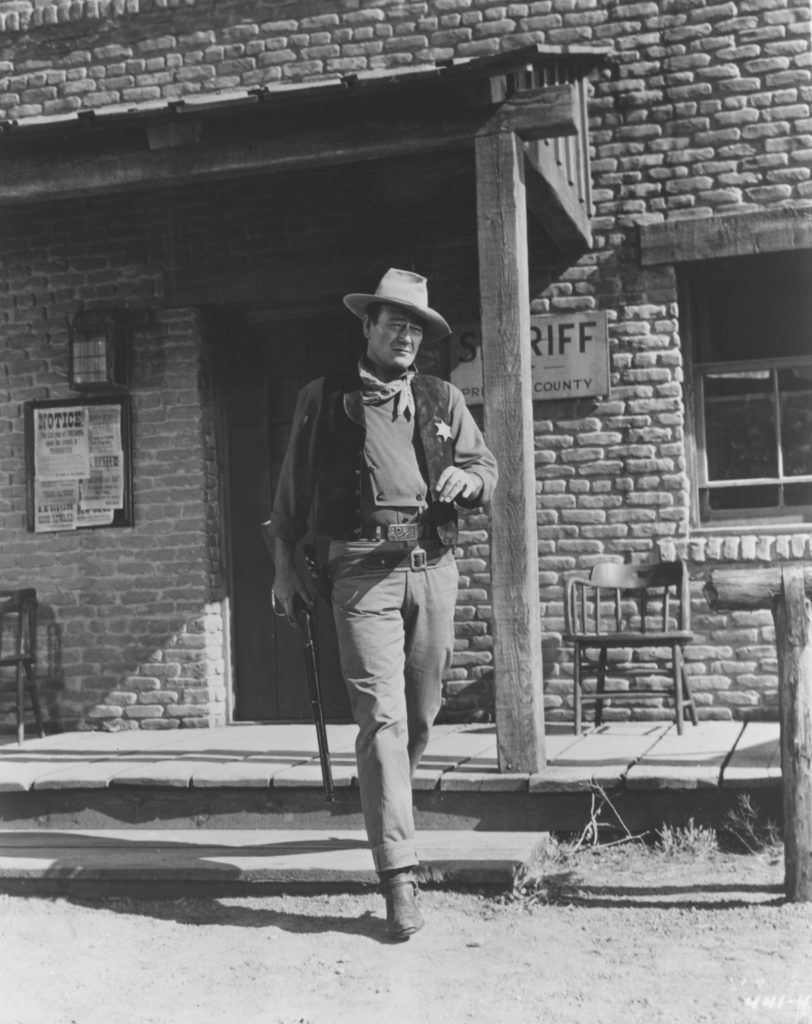
With an unlikely cast consisting of comic actor, teen idol, starlet and A-lister Duke—Howard Hawks’ Rio Bravo (1959) continues to gather fans 65 years after its release.
Written by Constance Dunn
“I would be working at See’s Candy, I’m sure, if I hadn’t been picked up by Howard Hawks,” mused Angie Dickinson on the opening night of 2023’s TCM Classic Film Festival in Hollywood. The star was on stage discussing her breakout role in 1959’s Rio Bravo, which had recently been restored in rich 4D and selected as the pivotal, opening night screening of the A-list packed festival.
It was 64 years after the release of the classic John Wayne western, which was masterfully directed Howard Hawks—and yet another sign of how the film’s accolades and admirers have continued to pick up steam over time. Back in 2014, for instance, the Library of Congress selected Rio Bravo for preservation in the National Film Registry. It was a high honor, issued more than a half century after the film’s release, that certified its inclusion among the ranks of the finest in American cinema.
Rio Bravo’s surprising, multi-generational cast remains chief among its charms. Dickinson—who in 2024 is the sole surviving member of the film’s main stars—was not yet famous, but cast by Hawks as the beguiling, spirited gambler Feathers. She joined famous comic actor Dean Martin making a sharp u-turn in the film a drunken sheriff’s deputy; soulful, sad-eyed and struggling to re-grasp his true, heroic nature. A seasoned Walter Brennan played the faithful, old-salt sidekick to Wayne’s John T. Chance, who is sheriff of the Wild West town of Rio Bravo.
A paragon of walking-tall courage and a man of few words, Chance steadily patrols the streets of his frontier jurisdiction as it teeters on the edge of mayhem. The film was shot mainly in Tucson in the spring of 1958, and as for Duke’s on-set treatment of the ingenue Dickinson, who played his much-younger love interest in the film, the actress recalled of Wayne: “He was very patient.”
Fresh-faced teen idol Ricky Nelson was the bold young gun named Colorado Ryan, rounding out the ragtag gang who defeat a procession of killers, increasingly menacing, who’ve been hired by a stony cattle baron intent on freeing his murderous brother from Chance’s jail.
It was a smart mix of performers that boosted the 1959 box office of the film, pulling in fans from different corners of the entertainment world and across generations, everyone from teenagers to their parents and beyond. Wayne fans, too. By then it had been 20 years since Duke’s star-making performance in Stagecoach, and he was still firmly among Hollywood’s top box-office earners. But the 1960s were right around the corner and in his early 50s, Wayne was entering a different epoch of his career—that of the unflappable elder statesmen who moves with quiet, wise reserve.
Rio Bravo put new eyes on Duke, and offered audiences—then and now—an always appealing promise: within sufficiently driven individuals there is adequate power to victoriously hold the lines of justice and order. Even when seemingly outgunned or outmanned. And when these individuals band together, their power swells. Courage in the face of dubious odds; and virtue over corruption are stock film themes. But in the case of Rio Bravo these conflicts are superbly presented and resolved in 141 minutes of tautly choreographed suspense by a master, director Hawks. And carried out by a perfectly misfit crew of heroes, led by Duke, that 65 years later you still want to cheer on.


